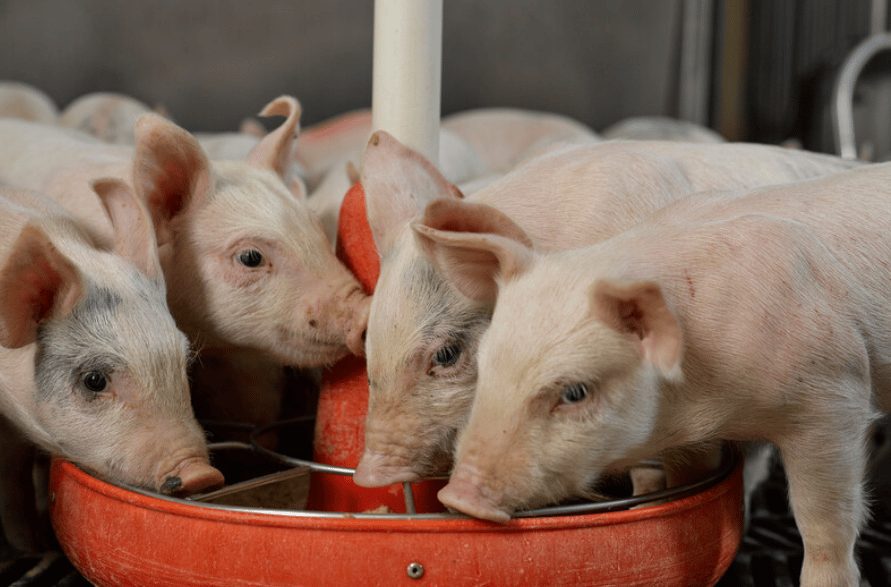Source: Pig333.com 13 August 2020, photo credit: National Pork Board and the Pork Checkoff/AgWeb
Feed delivery methods can largely be classified as dry, wet/dry and liquid. However, there is no generally accepted optimal feed form and delivery method for feeding finisher pigs.
Therefore, the aim of the present study was to compare the effect of feed form (meal and pellet) and delivery method (liquid, dry, and wet/dry) on feed microbiology and growth, gain-to-feed ratio (G:F), and carcass quality of finisher pigs. For that purpose, two batches of pigs were used, each with six pen replicates per treatment. In each batch 216 pigs (32.7 kg; ± 0.48 SE) were housed in same-sex pens of six pigs per pen. Pigs were on treatment for 62 d prior to slaughter. A 2 × 3 factorial arrangement was designed with two factors for diet form (meal and pellets) and three factors for feed delivery (dry, wet/dry, liquid).
The treatments were 1) meal from dry feeder, 2) meal from wet/dry feeder, 3) meal from liquid system, 4) pellet from dry feeder, 5) pellet from wet/dry feeder, and 6) pellet from liquid system. Pig growth performance was determined, blood samples collected at slaughter for hematological analysis and microbiological and proximate analysis of feed performed.
Read more
The South African Pork Producers’ Organisation (SAPPO) coordinates industry interventions and collaboratively manages risks in the value chain to enable the sustainability and profitability of pork producers in South Africa.
















